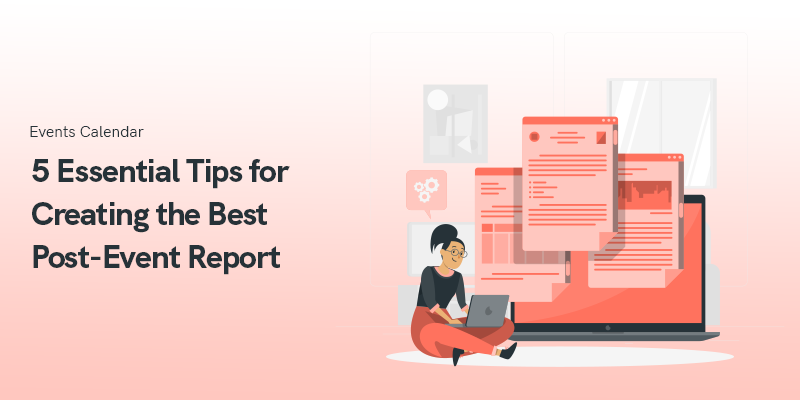Hosting an event is not where the process ends — what happens afterward is just as important, sometimes even more. A well-crafted post-event report is your secret weapon for:
- Evaluating success,
- Improving future events,
- And keeping stakeholders in the loop.
How to Create a Post-Event Report: 5 Essential Tips
Let’s discover five ways to create a report that truly stands out and helps you boost your event and business.
Gather Comprehensive Data During the Event
The foundation of a great post-event report is solid data. Track everything in real-time: attendee numbers, session attendance, social media engagement, and more.
There are tools such as CRM platforms or event apps that can make this process seamless and efficient.
Pro tip: It is useful to assign team members to monitor things and ensure everything is being collected and managed properly.
Analyze Key Performance Metrics (KPIs)
What gets measured gets managed. Focus on KPIs like ROI, attendee satisfaction, and engagement rates to gauge your event’s success.
Tools like Google Analytics and survey software can help you see the numbers and detect patterns and trends.
For example, it is useful to know whether your breakout sessions have higher attendance or how the keynote session is performing compared to that.
Include Stakeholder Feedback
Your attendees and sponsors are your best critics. Use post-event surveys to gather their thoughts.
Ask questions like:
- What did you enjoy most about the event?
- What could be improved?
- Would you attend again?
This feedback is gold for identifying what worked and what didn’t.
Use Visual Aids for Clarity
It’s not exactly an exciting job to sift through raw data. Spice up your post-event report with charts, graphs, and images to make it visually appealing and easy to digest.
Canva or PowerPoint can help you create professional visuals that highlight key takeaways at a glance.
Highlight Lessons Learned and Recommendations
Events have things go right and things that don’t.
Be honest about what went well and what didn’t. For example, if registration was a bottleneck, suggest a better system for next time.
Turn these lessons into actionable recommendations to show stakeholders you’re committed to continuous improvement.
How to Format and Present Your Post-Event Report
Structure is key. Here’s a simple format to follow:
- Executive Summary: A quick overview of the event’s success.
- Data Analysis: Metrics and KPIs with visuals.
- Feedback: Attendee and sponsor insights.
- Lessons Learned: What worked and what didn’t.
- Recommendations: Actionable steps for future events.
When compiling a report, tailor it to your audience — internal teams might need more detail, while sponsors may prefer a high-level overview.
Conclusion: Transform Insights Into Action
A post-event report isn’t just a recap—it’s a roadmap for future success.
By gathering data, analyzing metrics, and incorporating feedback, you’ll create a report that impresses stakeholders and sets the stage for even better events.
So, what are you waiting for? Start crafting your report today and turn those insights into action!

